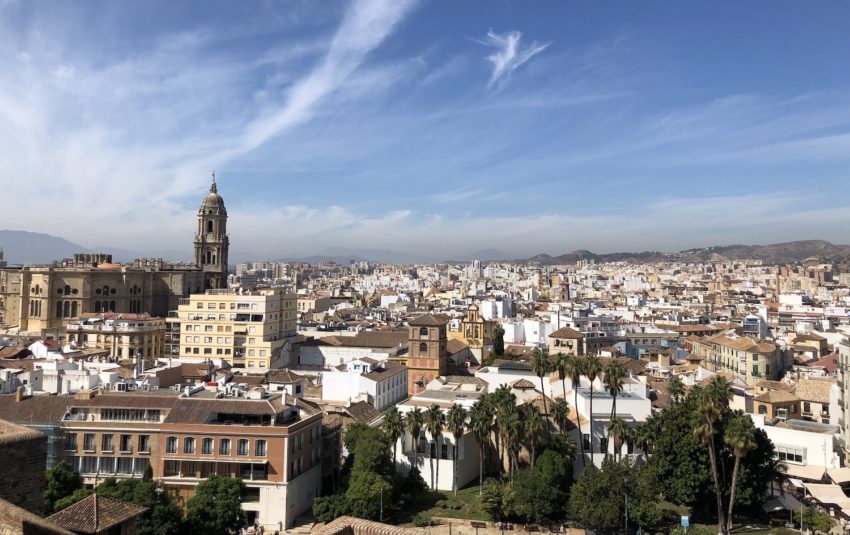Malaga has a reputation for being a jumping off point for holidays elsewhere in Andalusia rather than a destination in itself. But it was bonkers when we visited, full of tourists who’d decided it was worth a day or two of their precious vacations.
And while it doesn’t have a wealth of things to see, it’s much more than a transport hub and boasts a few notable museums, an attractive old town and marvellous sea views. Not that it welcomed us with open arms for we faced road closures and traffic jams on our arrival, thanks to the building of a new metro system. Our sat-nav had a mild nervous breakdown faced with such chaos and sent us round in circles until we abandoned the car and walked to our hotel. Meanwhile my blood pressure peaked at the danger zone.
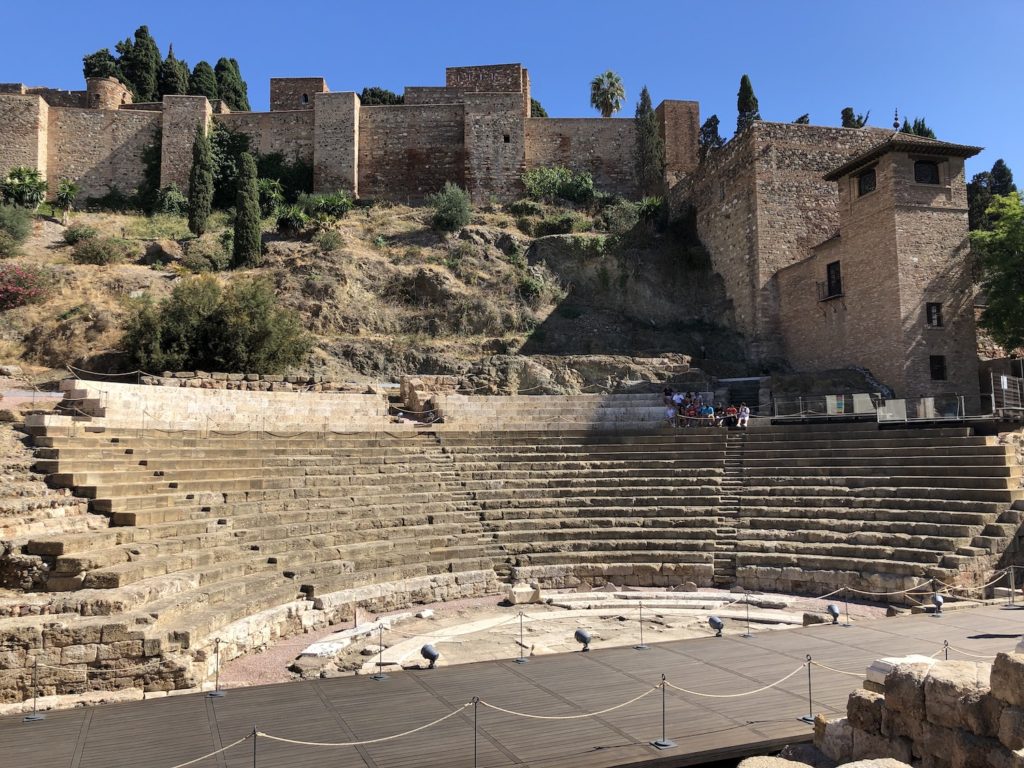
Our visit to Malaga marked the conclusion of a week in Andalusia, exploring the cities of Cordoba and Granada and we finished on a hotel high. The Room Mate Valeria is a relaxing, characterful, colourful hotel, close to the revamped harbour and the city centre. Arriving in the early afternoon, we went for a walk beneath deep blue skies and towering, swaying palms and came upon a tidal wave of tourists in the search for a light lunch. The central Atarazanas Market was far too busy so we ended up tucking into tapas in a side street in the heart of the shopping district.
The old town is attractive, with handsome apartment blocks, palacios, ornate balconies and marble pavements. Sculptures pepper the streets and plazas, which are largely traffic free, and there are so many bars, cafes and restaurants that it’s a wonder they can fill their tables and make any money. The cathedral squats over the heart of the district, an odd building with one complete and one half-finished tower, the result of a budget shortfall a few centuries back. Opposite stands the Palacio Episcopal, a riot of yellows and reds, while a short walk away is a museum devoted to the work of local lad Pablo Picasso, housed in the Buenavista Palace.
The works on show range from those of his youth to his flirtations with surrealism and fine examples of cubism. A prolific artist, his sculptures and ceramics are also displayed. But to be honest, and despite it being an extensive collection, the gallery lacks the power punch of a major work like Guernica so I left with something of a ‘so what’ feeling. I’m such an art heathen…
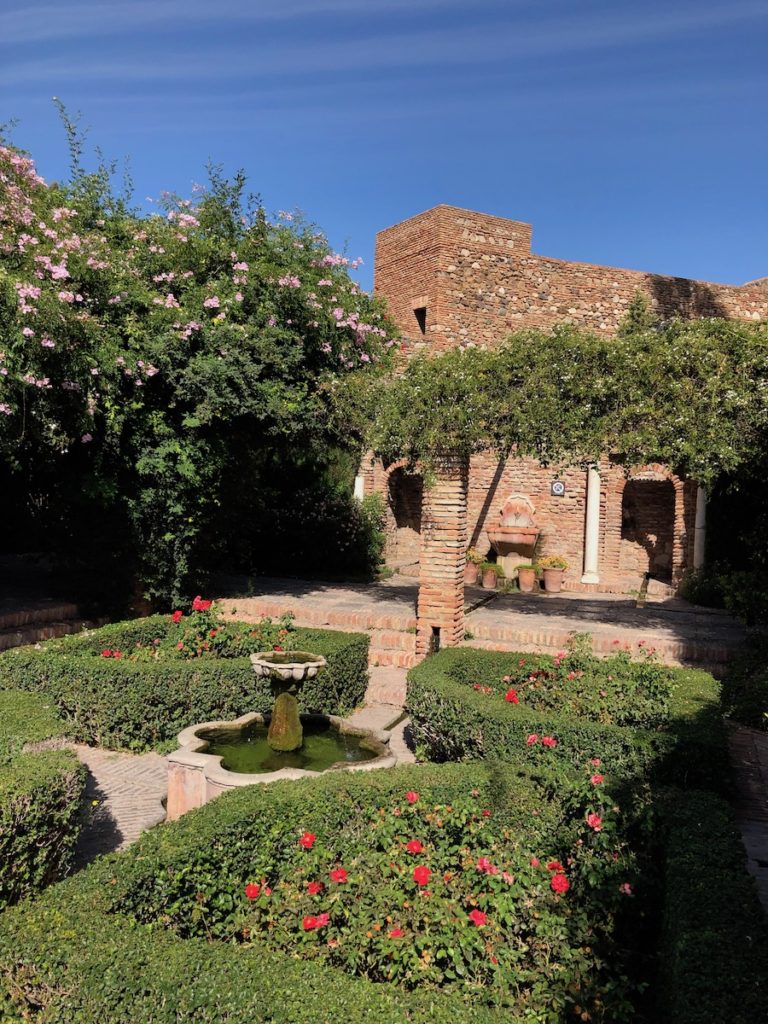
The evening saw us caught up in the maze of city centre streets trying to find a bar and restaurant that wasn’t too average or too touristy. Poor Graham had spent the whole week seeking out a plate of meaty albondigas in one restaurant after another, and failing, and we would have no luck in Malaga either until the lunchtime of our departure. But we ate well and drank well, which is just what we wanted for our last night in Spain.
With a few hours to fill before our flight home the next day, we walked over to the city’s Alcazaba fortress in the steamy heat and briefly explored the Roman theatre at the foot of the hill. Built in the reign of the Emperor Augustus, there’s not a huge amount to see there or in the neighbouring visitor centre so we carried on to the Alcazaba itself. The castle was built by the Moors in the 8th century and much extended and improved over subsequent centuries by the emirs. Today it looks heavily restored but there are some pleasant patios, gardens, water features, defensive works and palace buildings with elements of excellent Islamic design. However, it’s not a patch on the Alhambra in Granada.
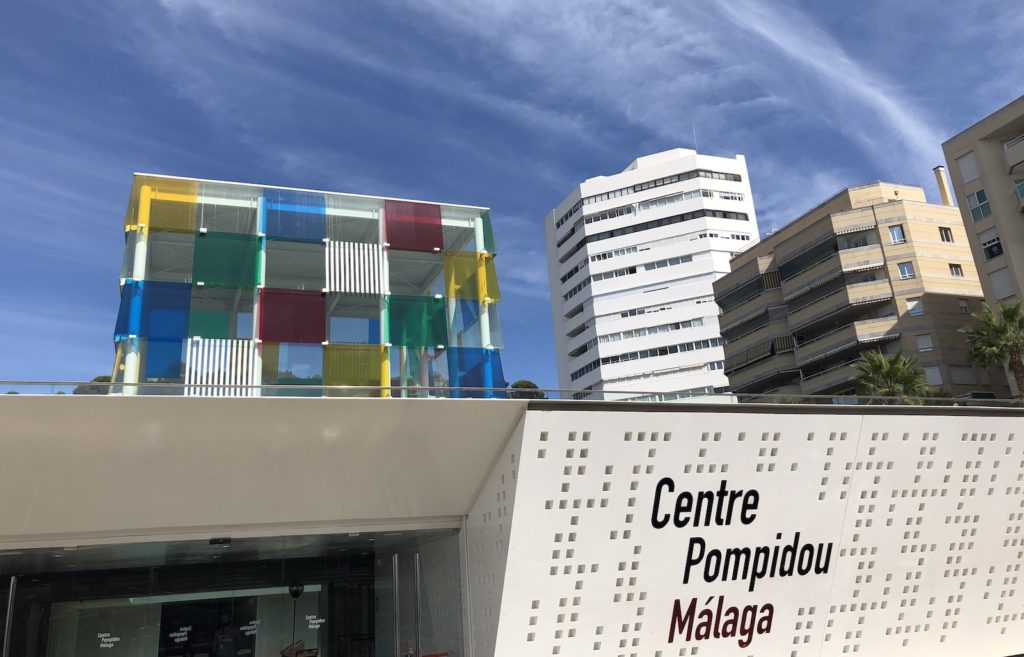
Further up the hill, amid the trees, is another Moorish fortress, the Castillo de Gibralfaro, but it was too hot to even consider the long trek to get up there. So after a brief stop for refreshments we walked through the Parque de Malaga, a lovely green space with palms, trees, water features and sculptures, but a park that’s stranded between two busy roads. At the end is the Muelle Uno, the revitalised harbour with a range of shops, bars and restaurants. It also boasts an outpost of Paris’s Pompidou Centre beneath an eye-catching multi-coloured cube. We paid our admission fee and perhaps doubled the number of visitors, touring a collection that was built around the theme of Utopias. And interesting it was too, with works by a number of leading modern artists ranging from pictures to sculpture. Some of it was ridiculously pompous and pretentious but that didn’t put me off and I particularly enjoyed a section on Utopian communities and architecture.
I didn’t particularly enjoy the harbour on which the gallery stands. It’s smart enough, gleaming and new and a pleasant place to walk with views of the Med, but it’s full of third-rate chain restaurants and stores, fast food joints and the like. We stopped for a beer at a rooftop bar that had views of the port – proof that there’s more to life in Malaga than just tourism – and then left for the city centre to find lunch, including the much anticipated albondigas. And then it was time to make our way to the airport and our flight home.
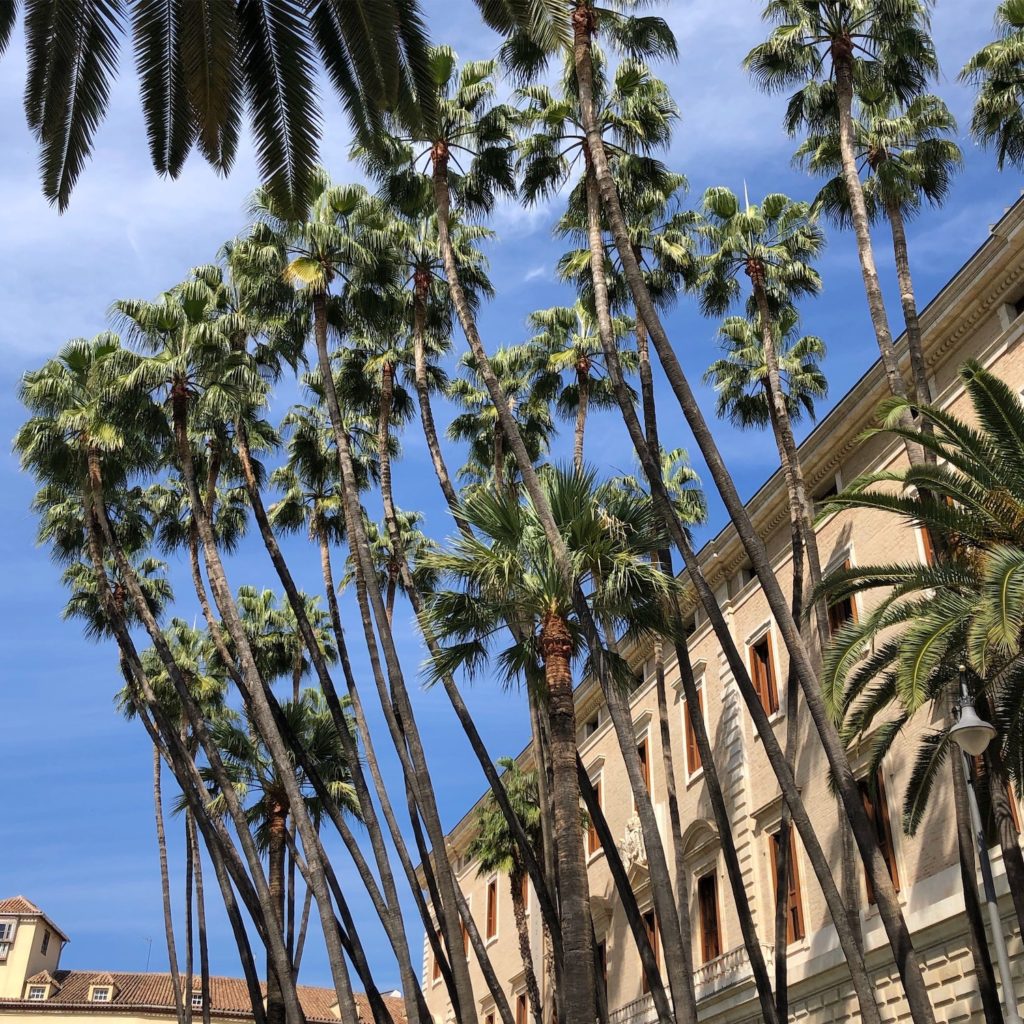
Malaga may not have been the highlight of our week in Andalusia but it was a pleasant enough city for a day or so, and leaving it was nowhere near as difficult as arriving. And that’s a positive…

